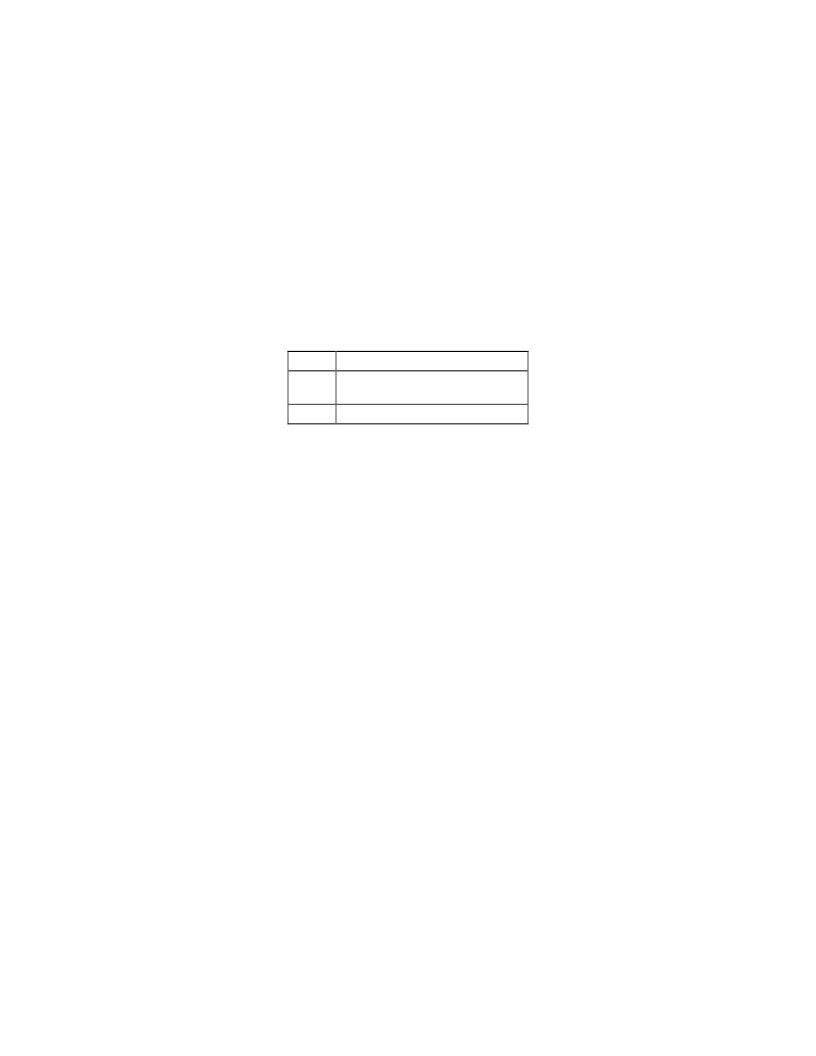- 您現(xiàn)在的位置:買賣IC網(wǎng) > PDF目錄358934 > LPC47M192-NC (STANDARD MICROSYSTEMS CORP) LPC SUPER I/O WITH HARDWARE MONITORING BLOCK PDF資料下載
參數(shù)資料
| 型號: | LPC47M192-NC |
| 廠商: | STANDARD MICROSYSTEMS CORP |
| 元件分類: | 外設(shè)及接口 |
| 英文描述: | LPC SUPER I/O WITH HARDWARE MONITORING BLOCK |
| 中文描述: | MULTIFUNCTION PERIPHERAL, PQFP128 |
| 封裝: | 14 X 20 MM, 2.70 MM THICKNESS, QFP-128 |
| 文件頁數(shù): | 96/228頁 |
| 文件大小: | 1269K |
| 代理商: | LPC47M192-NC |
第1頁第2頁第3頁第4頁第5頁第6頁第7頁第8頁第9頁第10頁第11頁第12頁第13頁第14頁第15頁第16頁第17頁第18頁第19頁第20頁第21頁第22頁第23頁第24頁第25頁第26頁第27頁第28頁第29頁第30頁第31頁第32頁第33頁第34頁第35頁第36頁第37頁第38頁第39頁第40頁第41頁第42頁第43頁第44頁第45頁第46頁第47頁第48頁第49頁第50頁第51頁第52頁第53頁第54頁第55頁第56頁第57頁第58頁第59頁第60頁第61頁第62頁第63頁第64頁第65頁第66頁第67頁第68頁第69頁第70頁第71頁第72頁第73頁第74頁第75頁第76頁第77頁第78頁第79頁第80頁第81頁第82頁第83頁第84頁第85頁第86頁第87頁第88頁第89頁第90頁第91頁第92頁第93頁第94頁第95頁當(dāng)前第96頁第97頁第98頁第99頁第100頁第101頁第102頁第103頁第104頁第105頁第106頁第107頁第108頁第109頁第110頁第111頁第112頁第113頁第114頁第115頁第116頁第117頁第118頁第119頁第120頁第121頁第122頁第123頁第124頁第125頁第126頁第127頁第128頁第129頁第130頁第131頁第132頁第133頁第134頁第135頁第136頁第137頁第138頁第139頁第140頁第141頁第142頁第143頁第144頁第145頁第146頁第147頁第148頁第149頁第150頁第151頁第152頁第153頁第154頁第155頁第156頁第157頁第158頁第159頁第160頁第161頁第162頁第163頁第164頁第165頁第166頁第167頁第168頁第169頁第170頁第171頁第172頁第173頁第174頁第175頁第176頁第177頁第178頁第179頁第180頁第181頁第182頁第183頁第184頁第185頁第186頁第187頁第188頁第189頁第190頁第191頁第192頁第193頁第194頁第195頁第196頁第197頁第198頁第199頁第200頁第201頁第202頁第203頁第204頁第205頁第206頁第207頁第208頁第209頁第210頁第211頁第212頁第213頁第214頁第215頁第216頁第217頁第218頁第219頁第220頁第221頁第222頁第223頁第224頁第225頁第226頁第227頁第228頁

forward direction. To terminate while the channel is in the reverse direction, it must first be transitioned into the
forward direction.
SMSC DS – LPC47M192
Page 96
Rev. 03/30/05
DATASHEET
Command/Data
ECP Mode supports two advanced features to improve the effectiveness of the protocol for some applications. The
features are implemented by allowing the transfer of normal 8 bit data or 8 bit commands.
When in the forward direction, normal data is transferred when HostAck is high and an 8 bit command is transferred
when HostAck is low.
The most significant bit of the command indicates whether it is a run-length count (for compression) or a channel
address.
When in the reverse direction, normal data is transferred when PeriphAck is high and an 8 bit command is transferred
when PeriphAck is low. The most significant bit of the command is always zero. Reverse channel addresses are
seldom used and may not be supported in hardware.
Table 45 - Channel/Data Commands supported in ECP mode
Forward Channel Commands (HostAck Low)
Reverse Channel Commands (PeripAck Low)
D7
D[6:0]
0
Run-Length
(mode 0011 0X00 only)
Count
(0-127)
1
Channel Address (0-127)
Data Compression
The ECP port supports run length encoded (RLE) decompression in hardware and can transfer compressed data to a
peripheral. Run length encoded (RLE) compression in hardware is not supported. To transfer compressed data in
ECP mode, the compression count is written to the ecpAFifo and the data byte is written to the ecpDFifo.
Compression is accomplished by counting identical bytes and transmitting an RLE byte that indicates how many
times the next byte is to be repeated. Decompression simply intercepts the RLE byte and repeats the following byte
the specified number of times. When a run-length count is received from a peripheral, the subsequent data byte is
replicated the specified number of times. A run-length count of zero specifies that only one byte of data is
represented by the next data byte, whereas a run-length count of 127 indicates that the next byte should be
expanded to 128 bytes. To prevent data expansion, however, run-length counts of zero should be avoided.
Pin Definition
The drivers for nStrobe, nAutoFd, nInit and nSelectIn are open-drain in mode 000 and are push-pull in all other
modes.
LPC Connections
The interface can never stall causing the host to hang. The width of data transfers is strictly controlled on an I/O
address basis per this specification. All FIFO-DMA transfers are byte wide, byte aligned and end on a byte boundary.
(The PWord value can be obtained by reading Configuration Register A, cnfgA, described in the next section).
Single byte wide transfers are always possible with standard or PS/2 mode using program control of the control
signals.
Interrupts
The interrupts are enabled by serviceIntr in the ecr register.
serviceIntr = 1
Disables the DMA and all of the service interrupts.
serviceIntr = 0 Enables the selected interrupt condition. If the interrupting condition is valid, then the interrupts
generated immediately when this bit is changed from a 1 to a 0. This can occur during Programmed
I/O if the number of bytes removed or added from/to the FIFO does not cross the threshold.
An interrupt is generated when:
1) For DMA transfers: When serviceIntr is 0, dmaEn is 1 and the DMA TC cycle is received.
2) For Programmed I/O:
相關(guān)PDF資料 |
PDF描述 |
|---|---|
| LPC47M192-NW | LPC SUPER I/O WITH HARDWARE MONITORING BLOCK |
| LPC47S422-MS | ENHANCED SUPER I/O WITH LPC INTERFACE FOR SERVER APPLICATIONS |
| LPC47S422QFP | ENHANCED SUPER I/O WITH LPC INTERFACE FOR SERVER APPLICATIONS |
| LPC47U33x | 100 Pin Enhanced Super I/O for LPC Bus with Consumer Features and SMBus Controller |
| LPC870-FJ | Mini SIDELED |
相關(guān)代理商/技術(shù)參數(shù) |
參數(shù)描述 |
|---|---|
| LPC47M192-NW | 功能描述:輸入/輸出控制器接口集成電路 Super I/O Contrllr RoHS:否 制造商:Silicon Labs 產(chǎn)品: 輸入/輸出端數(shù)量: 工作電源電壓: 最大工作溫度:+ 85 C 最小工作溫度:- 40 C 安裝風(fēng)格:SMD/SMT 封裝 / 箱體:QFN-64 封裝:Tray |
| LPC47M262-NU | 制造商:Rochester Electronics LLC 功能描述:- Bulk 制造商:SMSC 功能描述: |
| LPC47M262-NU WAF | 制造商:SMSC 功能描述: |
| LPC47M287-NR | 制造商:Rochester Electronics LLC 功能描述:- Bulk |
| LPC47M287-NW | 功能描述:輸入/輸出控制器接口集成電路 Enhanced Super I/O RoHS:否 制造商:Silicon Labs 產(chǎn)品: 輸入/輸出端數(shù)量: 工作電源電壓: 最大工作溫度:+ 85 C 最小工作溫度:- 40 C 安裝風(fēng)格:SMD/SMT 封裝 / 箱體:QFN-64 封裝:Tray |
發(fā)布緊急采購,3分鐘左右您將得到回復(fù)。